|
Learn all about the new County Pesticide Law and what to do to maintain a healthy lawn organically, and about lawn alternatives.
This excellent presentation was given recently in the Town of Chevy Chase, and recorded by Mont. Co. Municipal Cable. www.youtube.com/watch?v=8CQWNU4CyjU Thanks to the hard work of our members and the generous financial support of our community, the Jamestown Creek Native Plant Sanctuary (located along Jamestown Road between Duvall & Dalecarlia Drives) underwent a massive renovation during the 2019-20 garden club year. The focus was on removing invasive plants, completing much needed pruning and installing additional native plants. Check out this "before & after" slideshow.
The County's new pesticide law (effective May 2019) now restricts the use of certain pesticides on lawns, playgrounds and mulched recreation areas to further protect your family, pets and the environment. The law does not ban the sale of pesticides so it's important to know what to look for on the label to know if it is allowed or not.
www.montgomerycountymd.gov/lawns/law/ The link below includes best practices for lawn care, how to switch to organic lawn care and questions to ask when hiring a lawn care company. www.montgomerycountymd.gov/lawns/ Close up image of lesser celandine 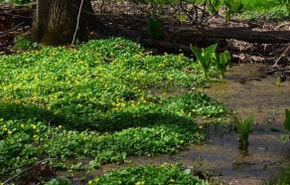 Lesser celandine invades a natural area If you have taken a walk down by the creek in recent days there is a lovely flush of yellow flowers. Though pretty, lesser celandine/celandine buttercup (Ranunculus ficaria) is very invasive and crowds out our native plants. Lesser celandine spreads easily and once it takes hold, it can be hard to eradicate. Many people in our neighborhood have this invasive in their gardens.
The glossy leaves and eight-petal yellow flowers of this European perennial arrive in March and April before most spring ephemeral wildflowers. A rapid spreader, it's leaves create an impenetrable mat that blocks emerging wildflowers. Small bulblets at the base are easily dislodged by digging humans or animals. The bulblets and tuberous roots are often carried downstream by high waters from the wet areas it favors. Digging to remove it is possible only when the entire plant plus soil can be lifted. Lesser celandine goes dormant by early June. Any method of control for lesser celandine will require persistence and monitoring. Small infestations of lesser celandine can be controlled by hand digging. Care must be taken to remove as much of the plant material (including all root material, bulblets and tubers) as possible. Removed plant parts should be bagged and disposed of as garbage and should never be composted. Follow–up work will be required to control any plants that develop from missed plant parts. For more information about lesser celandine, please refer to the resources below: www.invasive.org/eastern/midatlantic/rafi.html extension.umd.edu/hgic/topics/lesser-celandine www.nwcb.wa.gov/images/weeds/Lesser-Celandine-Control_Whatcom.pdf www.invasive.org/weedcd/pdfs/wgw/lessercelandine.pdf The Neal Potter Plaza at the Capital Crescent Trail is the result of a partnership among Montgomery Parks, Montgomery County, the Montgomery Parks Foundation and the Coalition for the Capital Crescent Trail.
As a long time financial supporter of the Coalition for the Capital Cresent Trail, the Westmoreland Hills Garden Club was honored by having our name placed on a brick on the walkway. On Saturday, November 3, 2018 a new park plaza on the Capital Crescent Trail was dedicated to the late Neal Potter, former Montgomery County Executive and six-term member of the County Council. The plaza is located at River Road on the Capital Crescent Trail, in the open space adjacent to the bridge. Potter is known as one of the architects of the modern Montgomery County for his leadership in tax policy, land-use planning, and transportation. The “Neal Potter Plaza at the Capital Crescent Trail” also honors the late David Burwell, co-founder of the Rails-to-Trails Conservancy and the late Lee Wick Dennison, an avid trail user whose generous donation to the Coalition for the Capital Crescent Trail helped support the construction of the plaza. A path leading from River Road to the plaza serves as a new entrance to the Capital Crescent Trail. The plaza features benches, two stone sitting walls, a pergola, trees, lawn areas, bike racks and a repair station. A three-panel kiosk has been installed with information about Potter, Burwell and Dennison as well as a map and historic photographs. The Capital Crescent Trail is an eleven-mile trail which runs from Bethesda to Georgetown. It is one of the most popular trails in the nation, used as a commuter route for cyclists and for leisure by cyclists, runners and walkers. To learn more about about Neal Potter: https://www.montgomerycountymd.gov/exec/previous/Neal_Potter.html About the Coalition for the Capital Crescent Trail The Coalition for the Capital Crescent Trail (CCCT) is a non-profit volunteer citizens’ group promoting a first-class development of the 11.2-mile Rail-to-Trail conversion from Georgetown, D.C. to Silver Spring, MD, for multi-purpose, recreational use. http://www.cctrail.org |
Archives
April 2022
Categories |
||||||


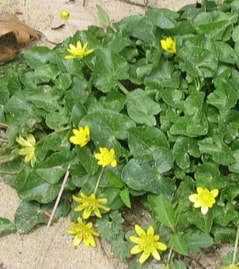
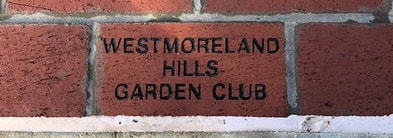
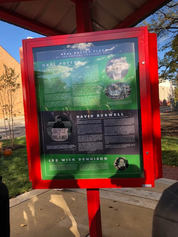
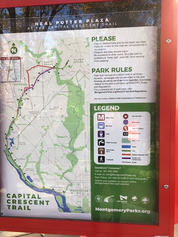
 RSS Feed
RSS Feed

